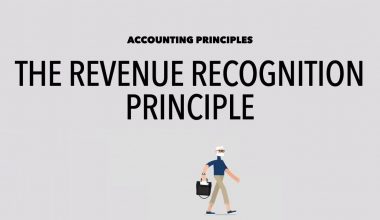Variable cost is an accounting term used to determine a company’s production expenses. Determining the variable costs involved in operating a business is essential for maintaining efficiency and profitability. That is to say, understanding variable costs helps you perform more accurate cost analyses to make better business decisions. In this article, I will define variable costs and provide a list of examples, including the formula used to calculate the average variable and the difference between fixed and variable costs( Fixed vs variable).
Variable Costs – What It Means
A variable cost is an organized expense that changes in proportion to how much a company produces or sells. Variable costs fluctuate depending on a company’s production or sales volume, rising as production increases and falling as production decreases. Firms depend on variable cost accounting to determine fluctuations and control costs per unit. For example, when a firm starts a new project, they try to project future expenses. In addition, any strategic plans relating to the growth, contraction, or expansion of new products will likely incur changes to variable costs.
What is the Meaning of Variable Expenses?
Variable expenses are the opposite of fixed expenses. A variable expense may recur from month to month. This means the amount you pay in any given month could be different from previous payments or ones you’ll make in the future.
Variable Costs Examples
Examples of these variable costs are commonly referred to as the “cost of goods sold,” or COGS. Variable costs are typically much easier to modify than fixed costs, which makes it very important for business leaders to pay attention to them on a regular basis.
Below are examples of variable costs,
#1. Raw Materials
Raw materials are the direct goods purchased that are later transformed into a final product. If the athletic brand doesn’t make the shoes, it won’t incur the cost of leather, synthetic mesh, canvas, or other raw materials. In general, a company should spend approximately the same amount on raw materials for every unit produced, assuming no major differences in manufacturing one unit versus another.
#2. Billable wages
This refers to the amount of money paid to employees who work on an hourly schedule. This contrasts with salaries, which are fixed amounts regardless of how many hours employees work. Billable wages are a variable cost because they change based on the number of employees, the number of hours each employee works, and the total number of hours the company or organization allows employees to work.
#3. Transportation costs
Transportation costs affect all stages of the supply chain. These costs depend on location, packaging, and logistics. Transportation costs also include the cost of freight, carriage, shipping, transit insurance, the cost of operating the fleet, etc. Businesses have very little control over transportation. It depends on the weather, fuel charges, infrastructure, and conditions.
#4. Credit card transaction fees
These fees apply to a business that accepts credit cards as a means of payment from customers. Here, the variable cost is the unpredictable amount of transaction fees each month as opposed to a fixed monthly fee. For example, a company may use a third-party organization to process its credit card sales and pay a percentage of those sales to the company for its services.
#5. Shipping/Freight
The cost to package or ship a product will only occur if a certain activity is performed. Therefore, the cost of shipping a finished good varies (i.e., is variable) depending on the number of units shipped. Though there may be fixed cost components to shipping (i.e., an in-house mail distribution network with a personalized weighing and packaging product line), many of the ancillary costs are variable.
#6. Labor
This is the amount that employees earn for every unit they complete or sell. Employee input typically determines the cost of labor rate. This example of variable costs also increases or decreases along with the rate of production. Labor is also the preferred means of payment when production requires personnel with variable skills.
Labor falls into the category of variable costs because sales personnel earn their payments only if they are able to sell products or services. Also, employees who surpass sales goals receive commissions. Additionally, by performing variable cost analysis, a company will better understand the inputs for its products and what it needs to collect in revenue per unit to make sure it’s making profits.
Are Purchases a Variable Cost?
Variable costs are those that will vary depending on the output of the store. Hence, in a retail setting, these costs might include sales commissions, inventory purchased for resale, cash register tape, and packaging materials such as bags. These costs will also depend on how much product is being sold.
Average Variable Cost Formula
The average variable cost formula is the sum of all the variable expenses involved in creating a product. Variable costs change over time and often depend on the business’ production volume, like materials and labor. These differ from fixed costs, which remain the same no matter how many items the company produces and can include expenses like facility rent.
Profit-maximizing Manufacturing companies use the AVC to help them decide when they should end production for a specific good. This happens after the price they receive for the product is higher than the AVC, which is a sign of a profitable product. There are two formulas you can use to find average variable costs, depending on what information you have. Here’s the first formula:
Average variable cost = total variable cost/output
If you have the average total cost and average fixed cost numbers, you can use this second formula instead:
Average variable cost = average total cost – average fixed cost
How to Calculate the Average Variable Cost
Here are some formulas for calculating the average variable cost:
#1. Subtraction Formula
The subtraction formula is applicable when you already know two other average costs per unit, which are the average total costs and average fixed costs. These are the steps in this method:
- Find the average total cost, which is the total cost divided by the output.
- Find the average fixed cost, which is the fixed cost divided by the output.
- Subtract the average fixed cost from the average total cost.
For example, if the average total cost of producing a product is $4 and the average fixed cost is $0.20, you’d calculate the following:
Average variable cost of the product = $4 – $0.40 = $3.80
#2. Division Formula
This formula is appropriate if you have the total variable costs and the output number, or quantity, of things you’ve made. Here are the steps for the division method:
- Find the total variable cost.
- Find your output.
- Divide the total variable cost by the output.
For instance, if the total variable cost of a product is $100,000 and your output is 5,000 units, you’d perform the following calculation:
Average variable cost = $100,000 / 5,000 = $20,000
Fixed vs Variable Costs
Variable costs are expenses that vary based on how much a company produces and sells. This means that variable costs increase as production rises and decrease as production falls. Some of the most common types of variable costs include labor, utility expenses, commissions, and raw materials. Fixed costs, on the other hand, are expenses that are constant no matter how much a company produces. These costs are normally independent of a company’s specific business activities and include things like rent, property tax, insurance, and depreciation.
Fixed vs Variable Costs: Differences
Let us take a look at the few features that differentiate fixed vs variable costs,
Firstly: fixed expenses generally cost the same amount each month (such as rent, mortgage payments, or car payments), while variable expenses change from month to month, for instance, dining out, medical expenses, groceries, or anything you buy from a store.
Secondly: fixed costs are also known as overhead costs, period costs, or supplementary costs. while variable costs are referred to as “prime costs or direct costs,” as they directly affect output levels. ( fixed vs. variable costs)
Thirdly: fixed costs are generally easier to plan, manage, and budget for than variable costs. However, as a business owner, it is crucial to monitor and understand how both fixed and variable costs impact your business as they determine the price level of your goods and services. Variable, on the other hand, can be challenging to manage as they can vary from month to month, increase or decrease quickly, and have a more direct impact on profit than fixed costs.
Lastly: fixed cost changes in units, i.e., as the units produced increase, fixed cost per unit decreases and vice versa, while variable cost remains the same, per unit. (fixed vs variable costs).
In general, no matter how much you spend each month, your expenditures include both fixed and variable expenses. So, understanding the difference is key to planning your budget and spending your money more wisely. Dividing your expenses into fixed and variable categories and being accountable for all of them in a monthly budget, gives you a clearer picture of where your funds are being allocated and can also help to spot opportunities to reduce costs.
Importance of Variable Costs
Determining these costs is important because it can help a company in the following ways,
#1. Making Informed Business Decisions
A high proportion of variable costs may enable a company to continue operating even if its sales volume is relatively low. A high proportion of fixed costs often means that the business must maintain a high volume of sales to remain financially stable.
#2. To Monitor Variable Expenses
Although the fixed costs associated with running a business remain relatively the same regardless of production output, they always increase the total variable cost as production increases.
#3. The Setting of Sales Targets
Rising expenses associated with variable costs are not always a negative indicator. It’s always necessary to ramp up production to achieve higher sales targets, which can entail additional costs.
Prevent overspending on materials or underpricing the cost per unit: It’s important to ensure that revenue increases at a higher rate than expenses. For example, if a company reports a volume increase of 8%, but sales increase by only 5% over the same period, then each product sold is most likely underpriced.
#4. Reduce Manufacturing Costs
It’s beneficial for companies to reduce the costs of manufacturing their products to ensure profitability. Therefore, many managers monitor profitability by dividing it by the total revenue to determine the costs as a percentage of the sales.
#5. Locating the Break-Even Point
Many companies consider variable costs when making profit projections or calculating break-even points for specific ventures or projects. Some expenses may be unstable according to a corresponding change in output, which may cause inconsistencies on your balance sheet.
#6. Analyzing Fixed Costs to Cut Unnecessary Expenses
It’s also worth noting that many products have variable and fixed components. Management salaries, for example, aren’t usually dependent on the number of units produced.
#7. To Calculate More Predictable Profit Margins
Companies that consistently have a higher percentage of variable costs compared to fixed costs may have more consistent costs per product. They could have more predictable profit margins than companies with relatively fewer variable costs.
#8. Management of Variable Costs to Increase Profitability
The success of a company often depends on its ability to make educated predictions about how the business venture will be affected by different operating conditions. One of the most important factors in making such predictions is determining the proportion of fixed costs to variable costs.
In a Nutshell…
Whether you’re just starting out in the business world or your company is up and running the above-detailed information will help in minimizing costs. Which is key to turning a profit and reaching your goals and also helps to make the best decisions about where, when, and how you can lower your total costs.
References
- corporatefinanceinstitute.
- .investopedia.
- shopify.com/
- .indeed.
- .hubspot.
Related Articles
- Total Cost: Definition, Formula, How to Calculate It & Free Tips
- COMMISSION PLAN: Sales Template & 2023 Best Practices
- Total Cost Formula: Ultimate Guide on How to Calculate the Total & Average Loan
- FIXED COST: Meaning, Examples, Formula, & How to
- OIL COMPANY STOCKS: Top Oil Stocks by Countries
- Scenario Analysis: Definition, How It Works, Examples & Importance






